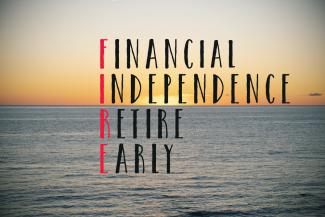
FIRE Movement: What Do They Get Right?
Recently, the trend of FIRE (Financial Independence, Retire Early) has gained traction among online communities and personal financial planning. The goal of financial independence is something everyone should strive for and the FIRE movement provides a few guidelines on how to save some extra dollars and cut back on spending. Over the course of a year, it is easy to lose sight of how much one spends on certain items. Below are some expenses to be mindful of that can add up over the course of a year:
Eating Out
While it is nice to go out and treat ourselves to a fancy meal once in a while, doing it too often can and will add up. Even a cup of coffee everyday in the morning adds up over the course of a year. On an annual basis, the average amount that individuals spend on coffee ranges from $1,400-$1,500. The inexpensive alternative, making your own coffee at home, can save a lot of money over the course of a year.
Phone Upgrades
Everyone sees the new commercials of the latest iPhone or Galaxy phone. On an annual basis, they are released as bigger and better. While the new features are nice, they are not absolutely necessary. In most cases, it only makes sense to get a new phone once your current phone has major technical issues. Most of us should be able to get at least four years from a new mobile phone.
Depending on some phone carriers, financing or leasing a new phone can cost $25-30 month ($300-360/year). One of the more common reasons for getting a new phone is due to a screen cracking. A screen repair can cost a little a $60. Learning how to fix it yourself can cost as little at $40. Just by delaying getting a new phone when this occurs can save you over $200.
Clothing
While the increasing issue of fast fashion makes it difficult to say no to affordable and stylish clothing, many individuals now find themselves wearing clothes once and then throwing them away. Even if the clothes themselves are donated to second-hand stores, the stores find themselves sometimes having to discard them as well due to an overabundance of donations.
You should consider making your wardrobe last a little longer and buy clothes only when needed. Maintaining a minimalist wardrobe means a less cluttered closet and a fuller wallet.
Cable
Cable prices have only gone up over the years. With packages of over 1000 channels, one really must ask, “Are you watching all of them or just 5-6 channels?” With cord-cutting becoming more mainstream, a $100/month cable bill can be reduced to $30/month for multiple streaming services.
Impulse Purchases
While this is a broad category, this encompasses anything that may catch your eye but do not absolutely need in the moment. On average, individuals spend up to $4,500/year on impulse purchases. Perhaps the next time you encounter a 60-inch TV on sale, it may serve you best to stop yourself from making this purchase. A self-imposed 24-48 hour ‘cooling off’ period can help to minimize impulse purchases.
The examples above are just a few of the more common ways to reduce your annual expenses. One should strive to maintain control of cash flow. Not doing so can run the risk of getting into unnecessary debt or worst yet, running out of money during retirement. Speaking to a financial planner can help you better understand what your spending looks like, what your spending limits are, and how well you are progressing on the path to financial independence.
Weingarten Associates is an independent, fee-only Registered Investment Advisor in Lawrenceville, New Jersey serving Princeton, NJ as well as the Greater Mercer County/Bucks County region. We make a difference in the lives of our clients by providing them with exceptional financial planning, investment management, and tax advice.

